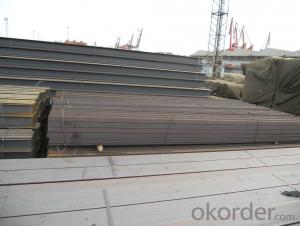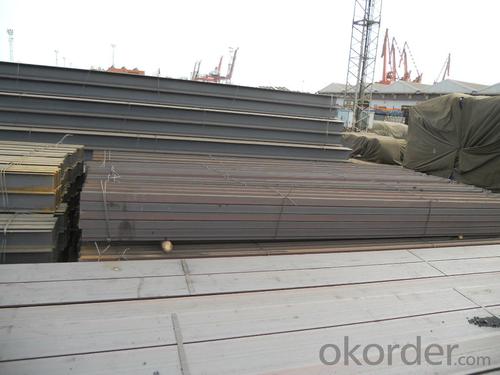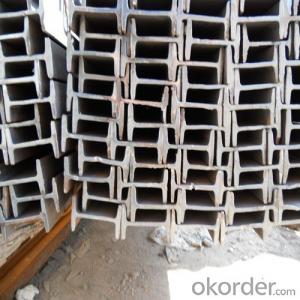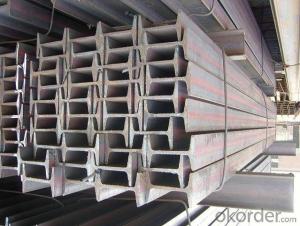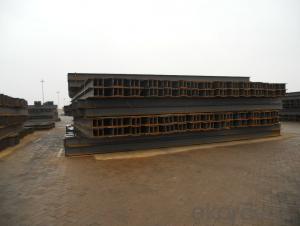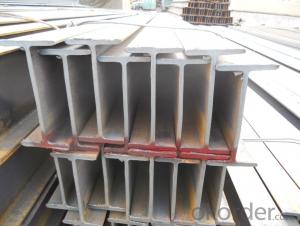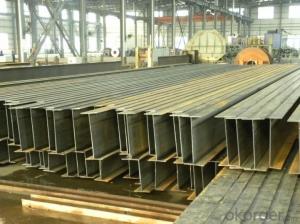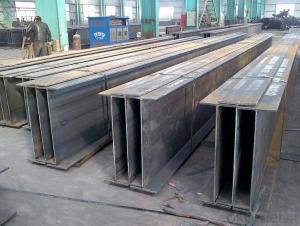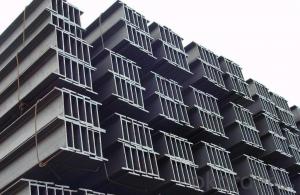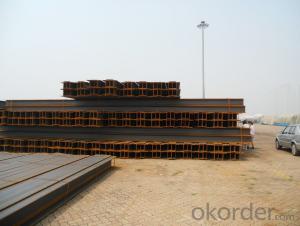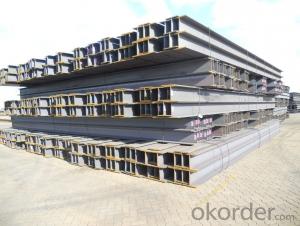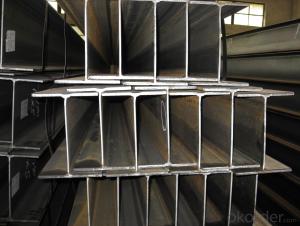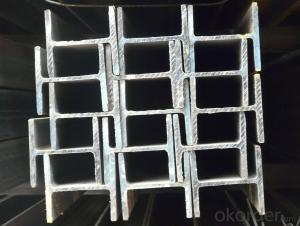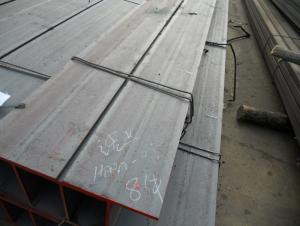Japanese Standard SS400 H beam with High Quality 294mm-300mm
- Loading Port:
- China main port
- Payment Terms:
- TT or LC
- Min Order Qty:
- 100 m.t
- Supply Capability:
- 15000 m.t/month
OKorder Service Pledge
OKorder Financial Service
You Might Also Like
Specifications of Japanese Standard SS400 H beam with High Quality 294mm-300mm:
1. Standard: JIS 3192
2. Grade: SS400 or Equivalent
3. Length: 10m, 12m as following table
4. Invoicing on theoretical weight or actual weight as customer request
5.Payment: TT or L/C
Size and Mass of Japanese Standard SS400 H beam with High Quality 294mm-300mm:
| Size (mm) | Mass (Kg/m) | Size (mm) | Mass (Kg) |
| 298*149*5.5 | 32.0 | 294*200*8.0 | 55.8 |
| 300*150*6.5 | 36.7 | 294*302*12.0 | 83.4 |
Usage of Japanese Standard SS400 H beam with High Quality 294mm-300mm:
(1). for the plant, high-rise building construction
(2). for the bridge, shipment building
(3).for lifting and transportation machinery, equipment manufacturing base building
(4). for the support, foundation pile manufacturing
FAQ:
Q1: Why buy Materials & Equipment from OKorder.com?
A1: All products offered by OKorder.com are carefully selected from China's most reliable manufacturing enterprises. Through its ISO certifications, OKorder.com adheres to the highest standards and a commitment to supply chain safety and customer satisfaction.
Q2: How do we guarantee the quality of our products?
A2: We have established an advanced quality management system which conducts strict quality tests at every step, from raw materials to the final product. At the same time, we provide extensive follow-up service assurances as required.
Q3: How soon can we receive the product after purchase?
A3: Within three days of placing an order, we will arrange production. The shipping date is dependent upon the quatity, how many sizes you want and the plan of production, but is typically 1 month to 2 months days from the beginning of production.
Images of Japanese Standard SS400 H beam with High Quality 294mm-300mm:
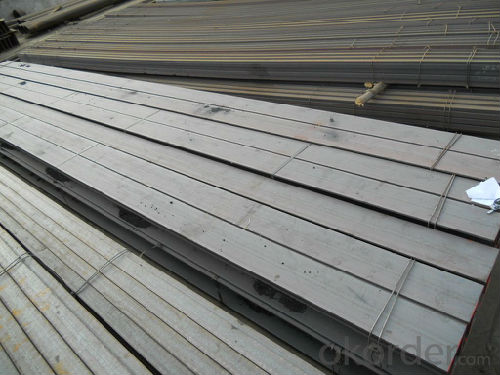
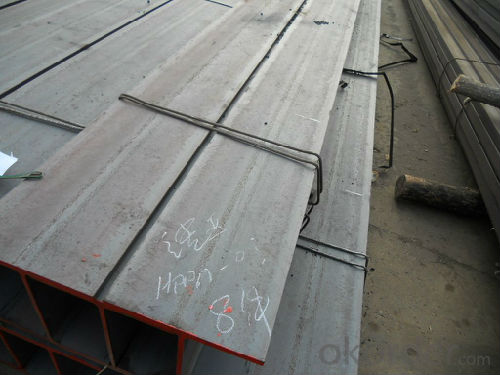
* If you would like to get our price, please inform us the size, standard/material and quantity. Thank you very much for your attention.
- Q: How are steel H-beams different from other types of beams?
- H-sections, also called Steel H-beams, possess distinct qualities and shape that set them apart from other beams. Their specific cross-sectional shape, resembling the letter "H," grants them significant advantages over alternative beam types. To begin with, the shape of the H-beam allows it to bear a greater load compared to beams of similar weight. This is due to the even weight distribution along its length, maximizing its ability to withstand heavy loads. Consequently, H-beams find extensive use in construction projects that demand robust and enduring structural support, such as high-rise buildings, bridges, and industrial facilities. Moreover, H-beams provide enhanced structural stability. The flanges, which are the top and bottom horizontal sections of the H-beam, offer resistance against bending and twisting forces. This characteristic makes H-beams less prone to deformations and enables them to maintain their shape under heavy loads. Additionally, the web, or vertical section of the H-beam, offers supplementary support and rigidity, ensuring overall stability in the structure. Another notable advantage of H-beams lies in their versatility. With their inherent strength and stability, H-beams can span longer distances without requiring intermediate supports. This enables the creation of larger open spaces and more flexible architectural designs. Furthermore, H-beams can be easily welded together, allowing for the creation of longer beams and expanding their range of applications. Lastly, H-beams offer cost-effectiveness. Despite their robustness, H-beams are comparatively lightweight in relation to their load-bearing capacity. This reduces transportation costs and simplifies the installation process, making them a cost-effective option for construction projects. In conclusion, Steel H-beams stand out from other beam types due to their unique cross-sectional shape. This shape provides advantages in terms of increased load-bearing capacity, structural stability, versatility, and cost-effectiveness. These characteristics make H-beams the preferred choice for various construction applications where strength, durability, and efficiency are crucial factors.
- Q: Can steel H-beams be used in residential pergola or canopy structures?
- Yes, steel H-beams can be used in residential pergola or canopy structures. Steel H-beams are known for their strength and durability, making them suitable for supporting heavy loads and providing structural stability. They can withstand various weather conditions, including wind, rain, and snow, ensuring the longevity and safety of the pergola or canopy structure. Moreover, steel H-beams offer a sleek and modern appearance, adding an aesthetic appeal to the overall design. However, it is essential to consult with a structural engineer or a professional contractor to ensure proper installation and adherence to local building codes and regulations.
- Q: Can steel H-beams be used in high-rise buildings?
- Yes, steel H-beams can be used in high-rise buildings. Steel H-beams are commonly used as structural elements in high-rise construction due to their high strength, durability, and ability to bear heavy loads. They provide excellent support and stability, making them a suitable choice for tall and large-scale structures.
- Q: What are the design considerations for steel H-beams in coastal areas?
- Some key design considerations for steel H-beams in coastal areas include corrosion resistance, durability against saltwater exposure, and high wind loads. The beams should be made from corrosion-resistant materials, such as stainless steel or galvanized steel, to prevent the deterioration caused by saltwater. Additionally, the design should account for the increased risk of corrosion due to the high salt content in the atmosphere. The beams should also be able to withstand the strong winds and potential storm surges commonly experienced in coastal regions. Proper anchoring and bracing techniques should be employed to ensure the structural integrity and stability of the beams in these challenging environmental conditions.
- Q: How do steel H-beams perform in earthquake-prone regions?
- Steel H-beams are considered to be one of the most effective structural elements in regions prone to earthquakes. The H shape and composition of these beams make them highly resistant to seismic forces, resulting in better performance compared to other building materials. To begin with, the H shape of the beams provides great strength and load-bearing capacity. This design distributes the weight evenly along the length of the beam, enabling it to withstand the lateral forces generated by earthquakes. This attribute allows H-beams to resist bending and deformation, which is crucial for maintaining the structural integrity of a building during seismic events. Furthermore, steel itself is a durable and flexible material. It exhibits exceptional tensile strength, allowing it to stretch and absorb the energy generated during an earthquake. This characteristic prevents the beams from fracturing or collapsing under the intense shaking and ground motion experienced in earthquake-prone regions. In addition, engineers can fabricate steel H-beams with specific seismic design principles in mind. Strategies such as moment-resisting frames or base isolation systems can be incorporated, further enhancing the seismic performance of these beams. These design techniques help dissipate and redirect seismic forces away from the building, reducing the potential for structural damage. Moreover, steel H-beams offer advantages in terms of construction speed and versatility. They can be prefabricated offsite and easily assembled on-site, saving time and resources during construction. This flexibility also allows for the creation of complex building designs, which can be crucial in areas with limited space or unique architectural requirements. In conclusion, steel H-beams are highly suitable for earthquake-prone regions due to their exceptional strength, flexibility, and adaptability. Their unique shape, material properties, and the ability to incorporate seismic design principles make them a reliable choice for ensuring the safety and resilience of structures in areas susceptible to seismic activity.
- Q: How do steel H-beams contribute to energy-efficient building designs?
- The numerous benefits of steel H-beams make them crucial components in energy-efficient building designs. Firstly, their high strength-to-weight ratio allows them to support heavy loads while minimizing the steel required. This reduces the overall weight of the building's structure and foundation, resulting in energy savings during construction, transportation, and installation. Moreover, H-beams provide excellent structural integrity, ensuring the stability and durability of the building. They resist bending and twisting forces, allowing for the construction of larger spaces without excessive support columns or walls. The open web design of H-beams also facilitates the installation of insulation materials, enhancing thermal efficiency and reducing energy consumption for heating and cooling. Additionally, H-beams can be easily fabricated and customized to fit specific architectural designs. This enables architects to optimize the building's layout for natural lighting and ventilation. By incorporating large windows, skylights, and open spaces, energy-efficient buildings can maximize natural daylight and reduce the need for artificial lighting. Similarly, proper ventilation systems can be integrated, utilizing natural airflows to cool the building and decrease reliance on energy-intensive air conditioning. Furthermore, steel H-beams possess excellent fire resistance properties, critical for energy-efficient buildings. They withstand high temperatures and prevent fire spread, enhancing occupant safety and reducing the risk of structural damage. Consequently, the need for fireproofing measures, such as additional insulation or sprinkler systems, can be minimized, saving energy and resources in the long run. In conclusion, steel H-beams significantly contribute to energy-efficient building designs through their high strength-to-weight ratio, structural integrity, thermal efficiency, and versatility in design. Their fire resistance properties further enhance the safety and sustainability of these structures. By utilizing H-beams, architects and builders can create environmentally-friendly structures that promote energy conservation, reduce greenhouse gas emissions, and contribute to a more sustainable future.
- Q: What are the differences between hot-rolled and cold-formed steel H-beams?
- Hot-rolled and cold-formed steel H-beams are two commonly used structural steel products that have distinct differences in their manufacturing processes and properties. Firstly, the manufacturing process for hot-rolled H-beams involves heating a steel billet or slab above its recrystallization temperature and then passing it through a series of rollers to shape it into the desired H-beam profile. This process results in a finished product with a rough surface texture and a scaled outer layer. In contrast, cold-formed H-beams are produced by bending and shaping steel sheets or strips at room temperature, typically through a series of rollers or press brakes. This method produces a smoother surface finish and eliminates the need for scaling. In terms of their properties, hot-rolled H-beams tend to have higher strength and load-bearing capacity compared to cold-formed H-beams. This is due to the structural changes that occur during the hot-rolling process, which refine the grain structure of the steel and increase its overall toughness. Cold-formed H-beams, on the other hand, have a higher degree of dimensional accuracy and consistency due to the precise shaping and bending process. This makes them suitable for applications where precise measurements and tight tolerances are required. Another significant difference lies in their cost and availability. Hot-rolled H-beams are generally more readily available and cost-effective compared to cold-formed H-beams. The hot-rolling process is faster and more efficient, allowing for larger production volumes and lower production costs. Cold-formed H-beams, on the other hand, may require additional processing and fabrication steps, which can increase their overall cost. In summary, the main differences between hot-rolled and cold-formed steel H-beams lie in their manufacturing processes, surface finish, properties, and cost. Hot-rolled H-beams offer higher strength and load-bearing capacity, while cold-formed H-beams provide greater dimensional accuracy and consistency. The choice between the two depends on the specific requirements of the project, including budget, structural needs, and aesthetic considerations.
- Q: Can steel H-beams be used in shopping malls and commercial complexes?
- Yes, steel H-beams can be used in shopping malls and commercial complexes. Steel H-beams are commonly used in the construction industry due to their structural stability and strength. They offer a high load-bearing capacity, which makes them suitable for supporting heavy loads in large commercial spaces. Additionally, steel H-beams provide flexibility in design and can be easily integrated with other construction materials. Their durability and resistance to fire and corrosion make them a reliable choice for long-term use in shopping malls and commercial complexes.
- Q: Are steel H-beams suitable for structures with dynamic loads?
- Structures with dynamic loads can benefit from using steel H-beams. These beams, also referred to as I-beams, are commonly utilized in construction due to their high strength-to-weight ratio, which makes them ideal for supporting heavy loads. The shape of an H-beam provides excellent resistance to bending, making it well-suited for structures experiencing dynamic loads like bridges, cranes, and high-rise buildings. Steel H-beams possess exceptional structural integrity, enabling them to withstand the forces generated by dynamic loads such as vibrations, impacts, and cyclic loading. They are designed to evenly distribute the load along their length, minimizing stress concentrations and preventing deformation or failure. Furthermore, steel is a durable material that exhibits excellent fatigue resistance. This means that H-beams can endure repeated loading and unloading without compromising their mechanical properties. As a result, they are highly suitable for structures that encounter varying or dynamic loads over time. Moreover, steel H-beams can be tailored to meet specific structural requirements, including length, size, and strength. This versatility allows them to be fabricated and connected to form intricate structural systems that efficiently handle dynamic loads. In conclusion, steel H-beams are a reliable and extensively used option in structural engineering for buildings and infrastructure subjected to dynamic loads.
- Q: What are the different types of steel H-beam connections used in industrial buildings?
- There are several different types of steel H-beam connections commonly used in industrial buildings. These connections are designed to provide stability and support to the overall structure. Here are some of the most commonly used types: 1. Welded connection: This is the most common type of connection used in industrial buildings. It involves welding the H-beam to other structural members or plates. Welded connections provide excellent strength and rigidity, making them suitable for heavy-duty applications. 2. Bolted connection: In bolted connections, the H-beam is fastened to other structural members using bolts and nuts. This type of connection allows for easier disassembly and reassembly, making it convenient for buildings that may need to be modified or relocated in the future. 3. Pinned connection: Pinned connections allow for rotation at the joint, providing flexibility to the structure. This type of connection is commonly used in situations where movement or vibration needs to be accommodated, such as bridges or buildings located in earthquake-prone areas. 4. Moment connection: Moment connections are designed to transfer both vertical and horizontal forces between the H-beams and other structural members. These connections provide enhanced stability and resistance against bending moments, making them suitable for structures with high loads or complex geometries. 5. Shear connection: Shear connections are used to transfer shear forces between the H-beams and other structural members. These connections are typically designed to resist lateral loads and provide stability to the structure. The choice of H-beam connection type depends on various factors, including the load requirements, structural design, and construction method. Engineers and designers evaluate these factors to determine the most appropriate connection type for each specific application.
Send your message to us
Japanese Standard SS400 H beam with High Quality 294mm-300mm
- Loading Port:
- China main port
- Payment Terms:
- TT or LC
- Min Order Qty:
- 100 m.t
- Supply Capability:
- 15000 m.t/month
OKorder Service Pledge
OKorder Financial Service
Similar products
Hot products
Hot Searches
Related keywords
